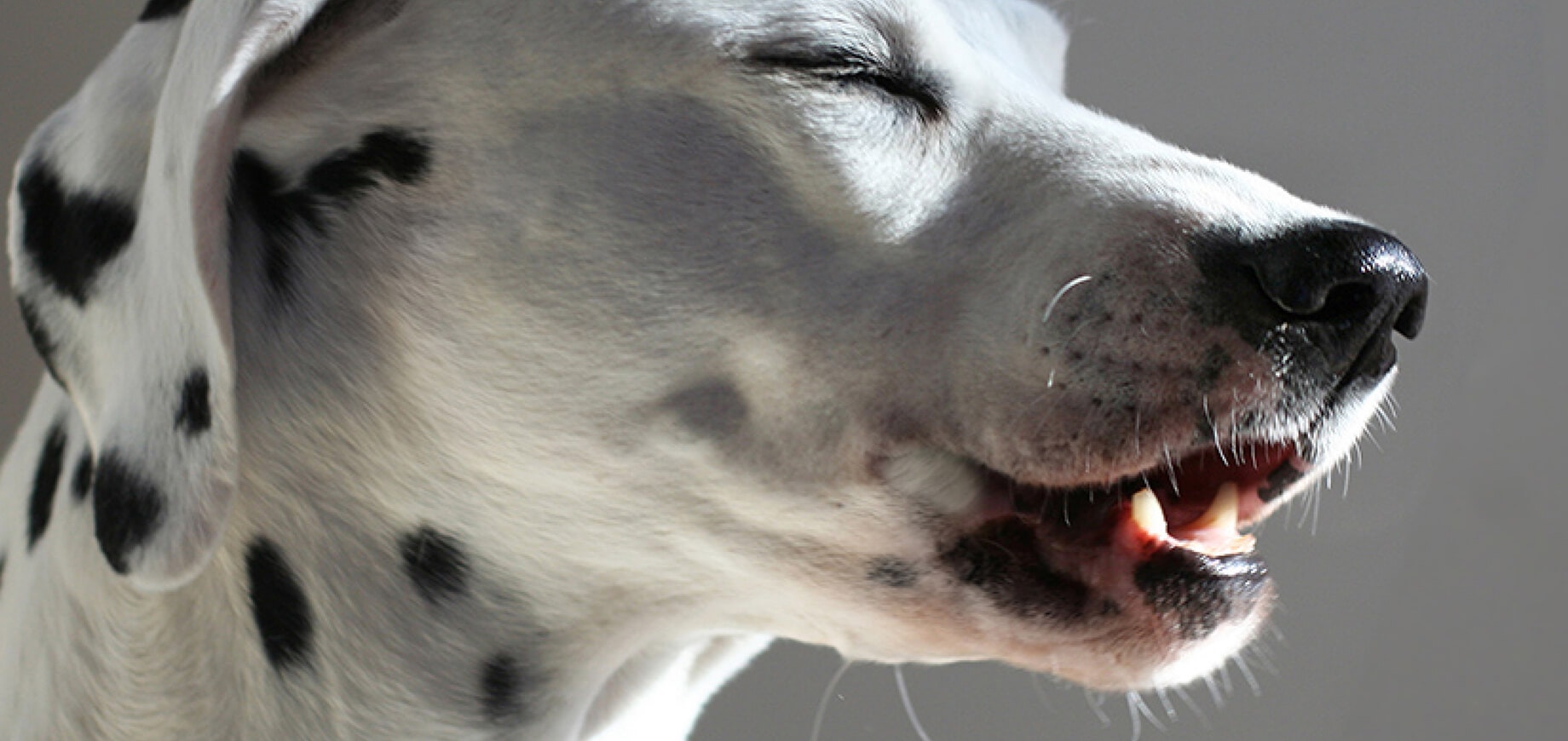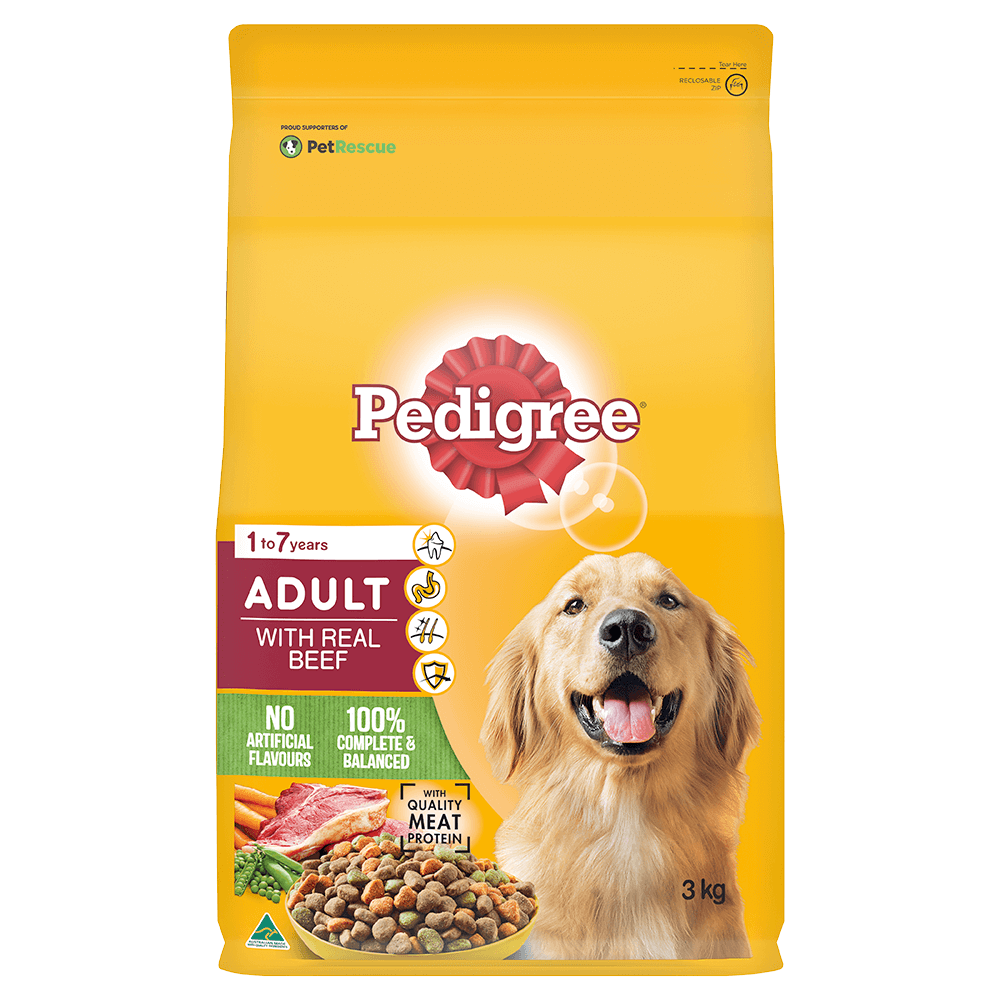Find products that match your dog’s needs

There are many reasons why a dog may go blind: infection, hereditary disease, or just old age. For some dogs blindness will be a gradual change, although sudden blindness can occur as a result of a traumatic experience or serious illness.
If a dog goes blind gradually, by losing sight in one eye and then the other, an owner might not even notice until the day they move the furniture and the dog starts walking into things. This is a common occurrence that many owners punish them for; they think they should have recognised the problem the first time their dog ran past them or bumped into a doorframe. Most of the time, it's not until you start adding up your dog's strange behaviour that you realise there is something wrong.
Once your dog has been diagnosed as blind, there are a few things you have to realise: Although it's natural to experience sorrow, guilt, and grief, try to skip all of those feelings. Your dog needs you to have a positive outlook and be focused on helping him overcome his disability.
For us humans, sight is the primary sense, but for dogs, the primary sense is smell, followed by hearing. Vision is relatively low on the list, being a dog's third-most important sense. To help your dog come to terms with his loss of sight, you have to maximise the use of your dog's hearing and smell. Dogs also possess a skill called cognitive mapping, which is the same instinct that allows them to find a bone they buried weeks ago. Your dog can use this instinct to figure out where objects are in the house.
Don't underestimate your dog's ability to rise above adversity. Give your dog the encouragement to stand on his own four feet, no matter how hard it is to take a bit of a back seat. If you do everything for your dog, such as carrying him upstairs or bringing his food to where he's lying, you are not teaching him to function on his own. In some cases, blind dogs can just give up and sink into a depression or develop a destructive separation anxiety. To dispel these problems, you need to build up a trust bond and take on the role of supporter, teacher and caregiver.
To help your dog, you need to start being creative with smells and textures. This is the way you can teach your dog to go to certain rooms in the house or to warn him of obstacles. You could use plug-in air fresheners or scented candles in each room to help the dog develop a map of the house through his sense of smell. Scented oils can help warn the dog of the presence of a wall or furniture as he approaches. And don't worry about whether you can smell the scent—your dog's nose is 200 times more sensitive than yours.
You may also want to place textured materials or mats at the entrances to rooms or the garden. Your dog will be able to feel the difference when he enters the room. For the first week or so, you will need to stick quite closely to your dog and guide him through the house. But he will soon pick up the scents and figure out where he is. You'll be amazed at your dog's adaptability.
Training is also vitally important for blind dogs. Instead of just 'heel,' 'sit,' and 'stay,' you need to add commands such as 'step up,' 'step down,' 'slow down,' and 'stop.' Self-preservation helps the dogs pick up on those new commands, but you have to work at it, too.
Think of potentially hazardous obstacles for blind dogs, such as stairs. Using a leash, gently lead him up the steps, giving him a treat at the top. Coax him down the steps with another treat. Remember to use the word 'step' with every stair. You may want to place a barrier at the top or bottom of the stairs, especially at night or when your pet is alone. Remember not to change your house, or you will confuse your dog. If you move furniture, his bed, or food dish, you risk upsetting his map of the house.
Most blind pets can live happy, quality lives if you follow these simple guidelines to make life easier for them. So ask the advice of your vet and begin to understand that if you remain positive, your dog's blindness isn't a debilitating problem at all

Find PEDIGREE® dog food online at one of our retailers today!
Buy online
Click to buy from any of the retailers below


